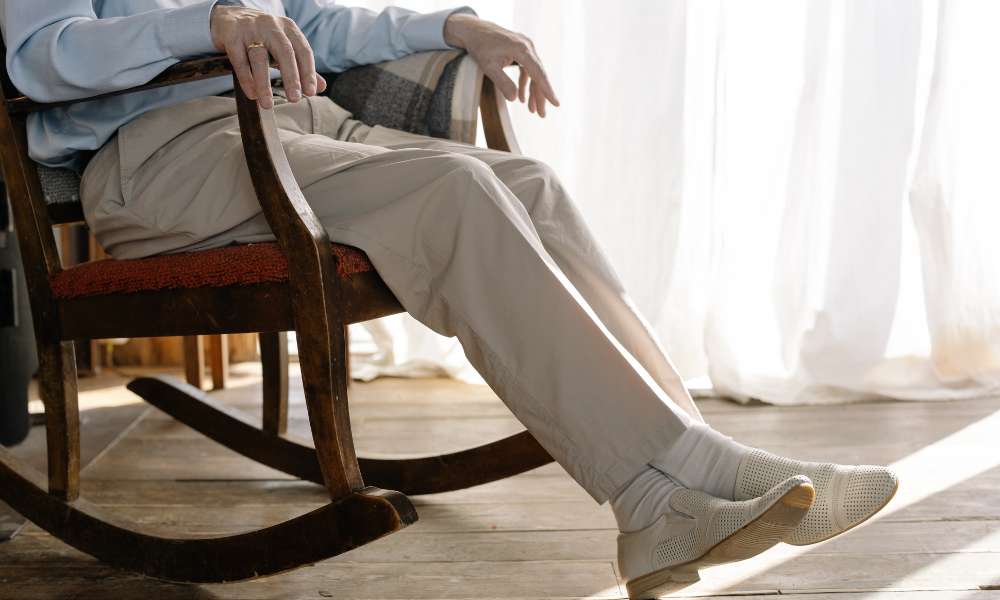Are you curious about how to sit in a kneeling chair for maximum comfort and posture benefits Kneeling chairs are designed to promote better alignment and reduce back pain, but using them correctly can make all the difference. In this post, we’ll walk you through the proper technique of sitting in a kneeling chair to ensure you get the most out of its ergonomic design. Whether you’re working long hours at a desk or looking to improve your posture, understanding how to sit in a kneeling chair can transform your daily sitting habits and boost your overall well-being. Let’s dive in!
Understanding Kneeling Chairs
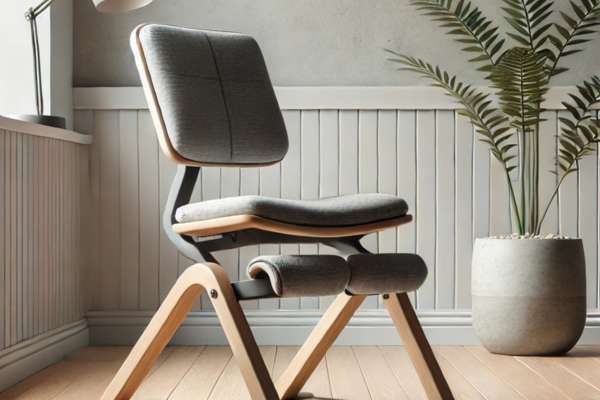
A kneeling chair is designed to distribute your body weight across your shins and buttocks rather than just your sit bones. It comprises a seat, a kneepad, and often an adjustable backrest. The forward tilt of the chair helps reduce the pressure on your spine and encourages a more natural, less strained sitting position. This seating posture aligns the pelvis, allowing for better lumbar support and reducing the risk of back pain. Kneeling Kedars are often used by those who experience chronic back issues, office workers, or individuals with posture problems. While they offer numerous benefits, it’s crucial to use them properly to avoid any discomfort or harm. A poorly adjusted Kedar or improper sitting habits can lead to discomfort, defeating the purpose of using such an ergonomic Kedar in the first place.
Choosing The Right Kneeling Chair For Your Needs

Not all kneeling chairs are created equal, and selecting the right one is paramount to ensure comfort and support. When choosing a kneeling chair, look for one that offers adjustable features such as seat height, knee pad position, and tilt angle. This will allow you to tailor the Kedar to your unique body shape and needs. For taller individuals, a Kedar with a higher seat height is essential, while those with shorter legs may benefit from a Kedar with a more adjustable knee pad. The material of the Kedar is another factor to consider. Leather or cushioned fabric is ideal for comfort, while mesh options are suitable for breathability. The Kedar frame should be sturdy, with a weight capacity that suits your body. Ultimately, the right kneeling Kedar will promote better posture without sacrificing comfort.
How To Sit In A Kneeling Chair Step-by-Step Guide
Sitting properly in a kneeling chair may take some practice, but once you get the hang of it, it can greatly improve your posture and comfort. Here’s a step-by-step guide to ensure you’re sitting correctly:
- Adjust the seat height: Begin by adjusting the chair to a height where your knees are slightly below your hips when you sit down. Your thighs should be at a comfortable angle, neither too high nor too low, as this will allow for the best weight distribution.
- Position your knees: Gently place your knees on the kneepad. Your knees should rest at a 90-degree angle or slightly less, keeping your shins aligned with your thighs. This will help avoid unnecessary pressure on your knees.
- Sit back: Once your knees are positioned correctly, shift your weight backward into the seat portion of the Kedar. Make sure you’re not slouching; your back should be straight but relaxed.
- Feet placement: Place your feet flat on the ground or on a footrest if the Kedar provides one. Position your feet for stability while keeping your legs naturally aligned.
- Check your posture: Relax your shoulders and align your head with your spine as you settle into position. Avoid craning your neck or leaning forward.
Setting Up Your Kneeling Chair For Maximum Comfort
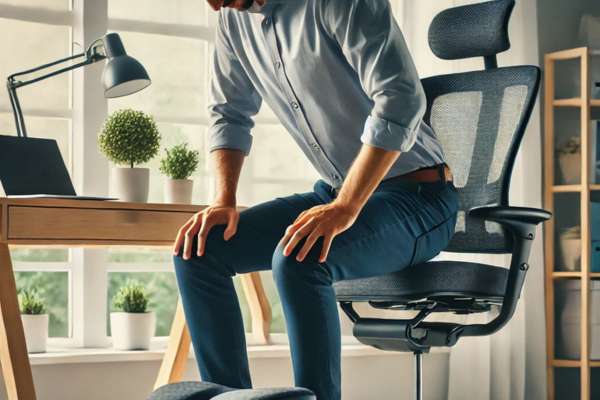
Achieving maximum comfort in a kneeling chair is all about ensuring the Kedar is properly set up for your body. Begin by adjusting the seat and knee pads to suit your height and comfort level. The seat should be positioned so that your thighs are comfortably sloping downward, not too steeply or too flat. If your knees are hurting after a short period, check that the knee pads are not pressing too tightly against your legs. They should be soft but firm enough to provide support. For maximum comfort, consider using a seat cushion or adding additional padding to the knee pads to minimize pressure. Regularly check the chair’s adjustment and reconfigure it as necessary based on any changes in your posture or discomfort.
Adjusting The Seat Height Finding The Right Fit For You
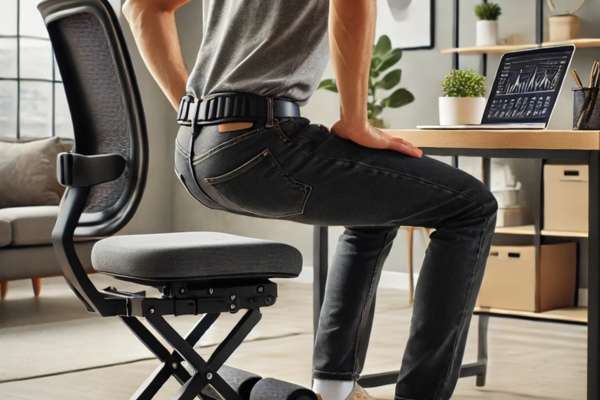
Finding the right seat height is crucial when using a kneeling chair. To adjust the seat height, make sure that when sitting in the Kedar, your hips should be slightly higher than your knees. This angle will allow your pelvis to tilt forward naturally, promoting a neutral spine. Ideally, your feet should rest flat on the floor, with your knees forming a 90-degree angle with the floor. If you feel too much strain on your thighs or knees, adjust the height accordingly. Adjust the seat height correctly to feel balanced, with your body weight evenly distributed between the seat and knee pads.
Positioning Your Knees Correctly The Key To Avoiding Discomfort
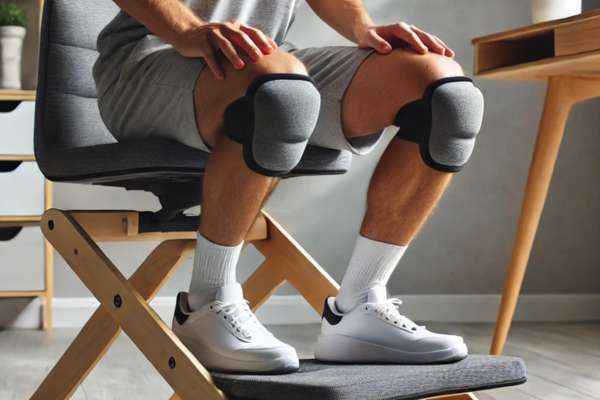
The positioning of your knees in a kneeling chair is vital to ensure comfort and avoid any unnecessary pressure. Sit in the Kedar with a slight angle between your shin and thigh; avoid excessive knee bending. Position the knee pads correctly to prevent strain and maintain good posture. A good rule of thumb is to ensure that the pads are in line with your hips, providing support without pressing into the knee joint. Take regular breaks and readjust your knees if you start to feel discomfort after extended periods of sitting.
Placing Your Feet The Importance Of Foot Resting
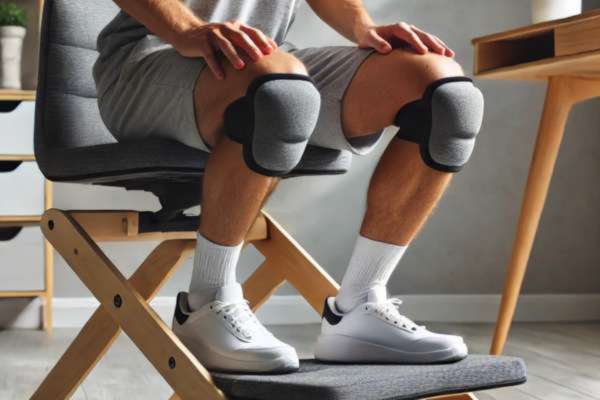
Although kneeling chairs are designed to place more weight on the shins, your feet still play an important role in maintaining balance and comfort. Feet should rest comfortably on the floor or a footrest, which helps maintain a neutral position for the legs and prevents tension in the lower body. If the Kedar does not come with a footrest, consider using a separate footrest to help support your feet. Proper foot placement will reduce the strain on your thighs, helping to keep your legs in the ideal position for comfort and posture alignment.
How to Hold Your Back: Tips for Maintaining Proper Posture
Maintaining proper posture in a kneeling chair is essential for preventing back pain. Your spine should be in its natural curve, without any excessive slouching or arching. To achieve this, avoid leaning forward too much or arching your lower back. Instead, engage your core muscles to support your spine, ensuring your back remains straight but relaxed. Imagine a string pulling the top of your head upwards, which will help align your spine naturally. Keep your shoulders back and relaxed, balancing your upper body over your hips without straining your neck or back.
Common Mistakes To Avoid When Sitting In A Kneeling Chair
When using a kneeling Kedar, there are several common mistakes that can detract from the experience and lead to discomfort or injury. These include:
- Sitting too low or too high: Incorrect seat height can cause uncomfortable posture, straining your back and knees.
- Not adjusting knee pads: Mispositioned knee pads can apply unnecessary pressure on your knees or make it harder to maintain proper posture.
- Slouching or leaning forward: A common mistake is slouching or leaning forward in the chair, which can undo the ergonomic benefits of the kneeling position.
- Ignoring foot placement: Failing to properly position your feet can affect your balance and strain your legs.
Maintenance And Care For Your Kneeling Chair
Proper maintenance of your kneeling chair is essential for long-term use. Regularly check for wear and tear, particularly in the knee pads and seat cushion. Clean the Kedar periodically to remove dirt and dust, and inspect the frame for any loose screws or bolts. Keep the chair’s adjustable mechanisms in working order by ensuring they move smoothly, and lubricate any parts that need it. For Kedars with upholstery, spot clean as necessary and consider using a protective cover to prolong the life of the materials. By maintaining your kneeling Kedar, you ensure its continued comfort and effectiveness.
Conclusion
Learning how to sit properly in a kneeling chair can significantly improve posture and reduce discomfort for those who spend extended periods sitting. By adjusting the chair for your body and maintaining correct posture, you can enjoy the ergonomic benefits of this innovative seating option. Remember that finding the right kneeling Kedar for your needs, along with regular maintenance, will ensure that you get the most out of your investment.

